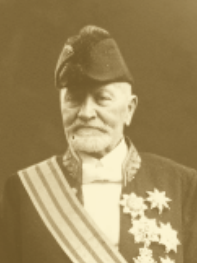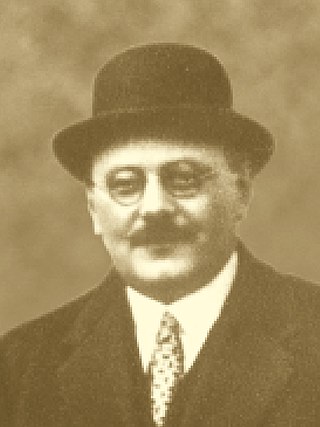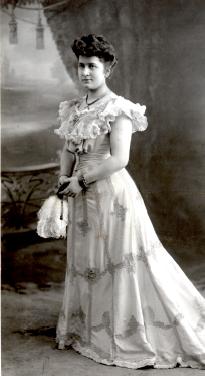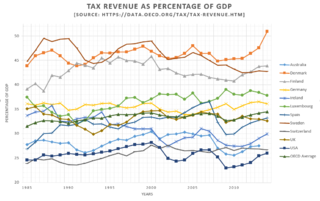
The Mongenast Ministry was only in office in Luxembourg for 25 days, from 12 October to 6 November 1915.

The Mongenast Ministry was only in office in Luxembourg for 25 days, from 12 October to 6 November 1915.

Marie-Adélaïde, was Grand Duchess of Luxembourg from 1912 until her abdication in 1919. She was the first Grand Duchess regnant of Luxembourg, its first female monarch since Duchess Maria Theresa and the first Luxembourgish monarch to be born within the territory since Count John the Blind (1296–1346).

Paul Eyschen was a Luxembourgish politician, statesman, lawyer, and diplomat. He was the eighth prime minister of Luxembourg, serving for twenty-seven years, from 22 September 1888 until his death, on 11 October 1915.

Victor Thorn was a Luxembourgish politician. He was the 11th prime minister of Luxembourg, serving for one year, from 24 February 1916 until 19 June 1917.

From August 1914 until the end of World War I on 11 November 1918, the Grand Duchy of Luxembourg was under full occupation by the German Empire. The German government justified the occupation by citing the need to support their armies in neighbouring France, although many Luxembourgers, past and present, have interpreted German actions otherwise.
The Liberal League was a political party in Luxembourg between 1904 and 1925. It was the indirect predecessor of the Democratic Party (DP), which has been one of the three major parties in Luxembourg since the Second World War.

The Ministry of Foreign and European Affairs, Defence, Development Cooperation and Foreign Trade, commonly referred to as the Ministry of Foreign Affairs, is a ministry of the government of Luxembourg, which comprises a general secretariat and eight directorates. The ministry is headquartered in the Bâtiment Mansfeld in Luxembourg City.

The Order of Merit of the Grand Duchy of Luxembourg is an order of merit of Luxembourg, instituted on 23 January 1961 by Grand Duchess Charlotte. Grand Master of the order is the Grand Duke of Luxembourg. Besides the five classes, a gilt medal can also be bestowed.
Henri Vannérus was a Luxembourgian politician, jurist, and diplomat.
Before the introduction of the euro, the current eurozone members issued their own individual national coinage, most of which featured mint marks, privy marks and/or mint master marks. These marks have been continued as a part of the national designs of the euro coins, as well. This article serves to list the information about the various types of identifying marks on euro coins, including engraver and designer initials and the unique edge inscriptions found on the €2 coins.

The Blochausen Ministry was the government of the Grand Duchy of Luxembourg from 26 December 1874 to 20 February 1885. It was led by Baron Félix de Blochausen.

The Prüm Ministry took office in Luxembourg on 20 March 1925. It was formed after the Chamber elections of 1 March 1925 and was supported by the Independent National Party, the Liberals, the Socialists and elements of the Party of the Right. It resigned on 16 July 1926, as the Liberals and Socialists could not agree over a bill for workers' holiday.

The Kauffman Ministry was in office in Luxembourg from 19 June 1917 to 28 September 1918.
The Loutsch Ministry was in office in Luxembourg from 6 November 1915 to 24 February 1916.
The Simons Ministry was in office in Luxembourg from 23 September 1853 to 26 September 1860. Initially it just consisted of three members of the government, to which two more were added on 23 September 1854.

The Eyschen Ministry was in office in Luxembourg for 27 years, from 22 September 1888 to 12 October 1915. It was headed by Paul Eyschen, and ended with his death.

Marguerite Mongenast-Servais (1885–1925), was a Luxembourg women's rights activist.

The Thilges Ministry formed the government of Luxembourg from 20 February 1885 to 22 September 1888.
The Council of Government of Luxembourg consists of the Prime Minister, the Deputy Prime Minister and a number of ministers.

Tax revenue in Luxembourg was 38.65% of GDP in 2017, which is just above the average OECD in 2017.